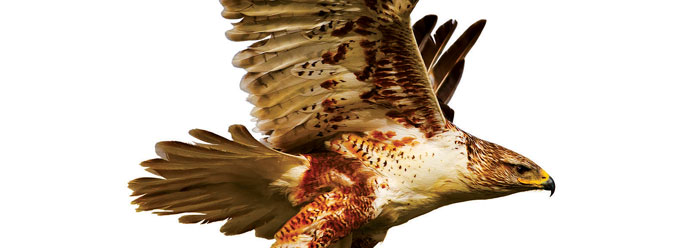Why are pilots and airplane mechanics so meticulous in their upkeep and maintenance of aircraft? The fact that one critical misstep would spell disaster shows that anything that flies must have many interdependent parts that are all narrowly specified for flight.
Birds, for example, were clearly designed for flight and were not formed by any purposeless natural process. The ancient book of Job stated as much:
But ask now the beasts, and they shall teach thee; and the fowls of the air, and they shall tell thee:…Who knoweth not in all these that the hand of the Lord hath wrought this? (Job 12:7, 9)
Some of the required parts for flying birds are visible from the outside, such as wings and an aerodynamic body shape. Other characteristics are less obvious, but equally important.
Anything that flies must have a specific power-to-weight ratio. If the wing construction material, for example, was strong enough to resist air but too heavy for its "engine" to lift, such a creature would never get off the ground. The useless, dangling wings would also make it unfit for land life. Bird feathers are made of expertly "knitted," strong, lightweight keratin protein fibers.
Also, a bird’s center of mass is toward the front, in between its wings. This is a crucial aerodynamic arrangement that enables in-flight control of balance and maneuvering. It is also one evidence that birds are not descended from dinosaurs. A dinosaur’s bulk was situated above its hind legs, and there is no fossil…let alone a series of fossils…showing that bulk gradually shifting forward. In fact, a creature with its mass centered in the middle would not yet be able to control itself in the air. It would also not be able to maneuver on the ground as well as its dinosaur peers. Surely, such an imaginary creature would have become food for its better-equipped companions, thus ending the whole evolutionary experiment.
A small but crucial feature on many birds is the alula feather. This is precisely positioned at the front of the wing and is pushed forward just before landing to prevent stalling at low airspeeds. Without it, these birds would crash-land. The pterodactyl’s equivalent of the alula feather was the pteroid bone, which moved a small flap of skin forward when landing. Flaps on the front of jet airliner wings serve the same purpose.
There are many more specific, required features, like retractable landing gear and horizontal stabilizers, not to mention damage repair mechanisms. But all this precision hardware, assembled in perfect order, still would not fly without the right software. Flight controls constantly detect wind speed and direction, and monitor visual, magnetic, and three-dimensional orientation inputs. Based partly on this data, the system then produces a myriad of finely controlled outputs, including the timing and activation of the large pectoralis muscles that power the wings, as well as tiny muscles that adjust the camber of many individual flight feathers in a coordinated effort to fly.
Airplane caretakers cannot afford to overlook any detail. The pilot’s and passengers’ lives depend on all parts being specified to within a very narrow range of sizes, shapes, and strengths. So, noticing that no specification was left out of the flying bird’s design, the straightforward inference from engine to engineer, from design to designer, or from detail to detailer is perfectly valid.
And this does not even take into account the beauty of bird flight, bird songs, or their various colorful feathers, which constitute art that demands an Artist who can blend high flights of imagination with the most intricate engineering quality.
Surely the great Creator deserves credit for His fantastic handiwork!
* Mr. Thomas is Science Writer at the Institute for Creation Research.
Cite this article: Thomas, B. 2011. Fit for Flight. Acts & Facts. 40 (8): 17.














